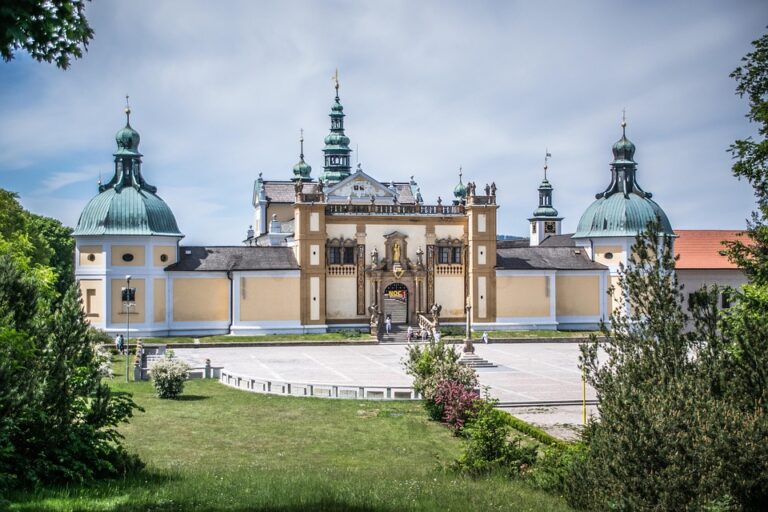Awakening the Past: How Historical Destinations Inspire Modern Art and Literature
In an era dominated by technology and digital media, the allure of historical destinations remains undiminished, continuously sparking creativity in modern art and literature. These sites, steeped in stories of yesteryear, serve as muses for artists and writers who draw inspiration from the rich tapestry of human history. This article examines how various historical destinations fuel modern creative expressions, making history not only a subject of study but also a wellspring of artistic innovation.
The Connection Between History and Creativity
Historical destinations, often visited by millions, harbor deep narratives that resonate across generations. According to a report from the National Trust for Historic Preservation, 80% of Americans believe that historic preservation enhances the quality of life in their communities. This statistic underscores the value people place on heritage, encouraging a renewed interest in exploring history’s stories.
As artists and writers engage with these sites, they often reinterpret past events and figures through contemporary lenses. A classic example is the works of acclaimed writer Virginia Woolf, who drew inspiration from her visits to historical locales in England, weaving themes of time and memory throughout her novels.
Historical Destinations as Creative Catalysts
-
Places of Inspiration
Historical landmarks such as the Colosseum in Rome or the ruins of Machu Picchu in Peru evoke a sense of wonder and contemplation. For instance, renowned artist Kehinde Wiley found inspiration in the grandeur of historical European art and architecture, which he often juxtaposes with contemporary subjects in his portraits. These sites challenge artists to bridge past and present, offering vibrant backdrops for their creative explorations.
- Cultural Narratives
Historical destinations also embody unique cultural narratives that artists and writers tap into. The city of Paris, often dubbed the "City of Light," has long inspired countless artists, including literary giants like Ernest Hemingway and F. Scott Fitzgerald. Their works reflect not just the ambiance of the time but also the historical upheavals that shaped society. The 1920s, a testament to cultural flourishing post-World War I, provided fertile ground for reflection, as seen in Hemingway’s "The Sun Also Rises."
Revitalizing Art Forms Through Heritage
Art movements often revive and reinterpret historical styles and themes. The contemporary art scene increasingly integrates historical motifs, as evidenced by data from the Modern Art Museum of Fort Worth, which reports a 30% increase in exhibitions that blend historical styles with modern practices over the past five years.
-
Example: Mixed Media Artists
Artists like Yinka Shonibare MBE utilize historical references combined with modern sensibilities. Shonibare’s work challenges colonial narratives through the lens of Victorian culture and themes of identity, demonstrating how historical destinations influence understanding of cultural heritage.
- Literary Influences
Similarly, historical events serve as backdrops for novels and poetry. The resurgence of historical fiction, as shown by a 40% increase in readership according to a recent Nielsen report, indicates a growing interest in narratives that challenge readers to engage with the past.
The Role of Museums and Exhibits
Museums often serve as critical hubs where history and creativity intersect. Exhibitions dedicated to historical artifacts allow artists and writers to draw lines between the past and present. The Louvre, for example, continually inspires art through its displays of ancient artifacts, which frequently feature in contemporary art installations.
Benefits of Historical Engagement
Engaging with historical destinations fosters a deeper understanding of cultural identities and social dynamics. Artists are able to explore themes of resilience, transformation, and current societal challenges, often making their work more relatable and politically charged.
- Impact on Public Sentiment
Historical sites foster community sentiment. A study by the Cultural Tourism Consortium indicates that 72% of tourists visit historical destinations to better understand cultural heritage, leading to heightened awareness and appreciation for both past and present contexts.
Conclusion: Bridging the Past and Present
In a world where history informs the present, the influence of historical destinations on modern art and literature cannot be overstated. As more artists and writers seek inspiration from these rich legacies, our understanding of artistic expression becomes increasingly intertwined with historical narratives.
Historical destinations are not just remnants of the past; they are vibrant sources of inspiration that challenge artists and writers to awaken the past and reinterpret it for contemporary audiences. By immersing themselves in these sites, creators breathe life into history and offer fresh perspectives on the timeless narratives that shape our world.
For further exploration of how art intersects with history, check out our articles on The Influence of the Renaissance on Modern Art and Exploring Cultural Movements in Literature. For external reading, visit the National Trust for Historic Preservation to understand the lasting impact of preserving historical sites.
Suggested Images
- Image 1: A panoramic view of Machu Picchu – Alt text: "Historical destinations inspire modern art and literature at Machu Picchu."
- Image 2: Artists at work in a museum setting – Alt text: "Historical destinations fuel creativity in modern artists."


